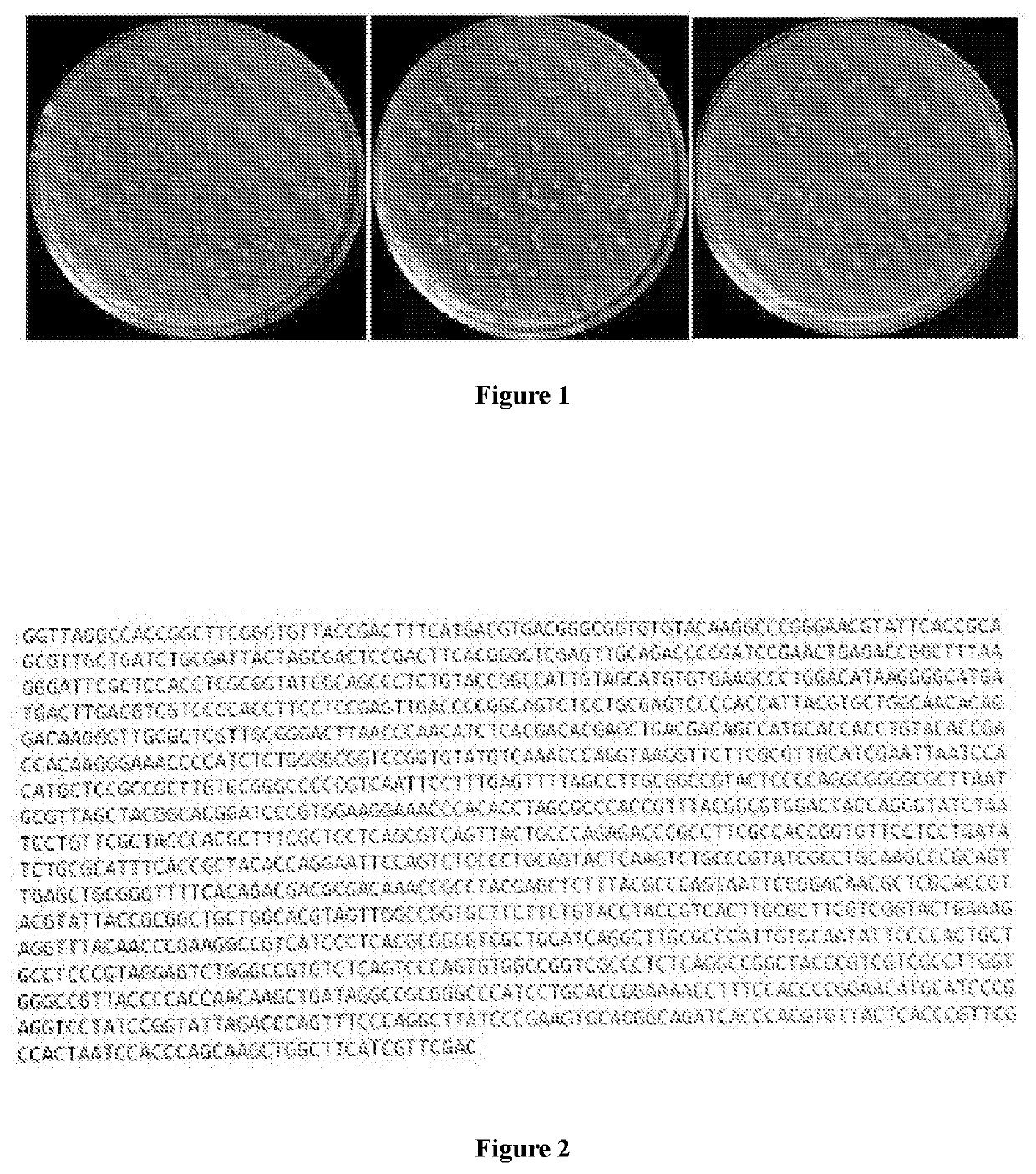Product derived from rhodococcus ruber, and pharmaceutical use thereof
- Summary
- Abstract
- Description
- Claims
- Application Information
AI Technical Summary
Benefits of technology
Problems solved by technology
Method used
Image
Examples
example 1
n of the Strain
[0120]The original place for the isolation of the strain cannot be verified. The inventors deposited the laboratory-preserved seed strain at China General Microbiological Culture Collection Center (CGMCC, Yard No. 1(3) West Beichen Road, Chaoyang District, Beijing) on Mar. 22, 2019, under deposit number CGMCC No. 17431. Test showed that the deposited strain was viable.
example 2
ation of the Strain
[0121]1. Visual Observation of the Morphological Characteristics of the Colony
[0122]The strain was cultured on a glycerol agar medium at 30° C. to 37° C. (specifically 32° C. to 35° C.) for 12 to 72 (specifically 36 to 60, such as 40 to 50) hours, and the following was observed (FIG. 1):[0123]the colonies plumped up;[0124]were orange-red in color (slightly different depending on influences of light, the color of the culture medium, etc.);[0125]the surface was dry and wrinkled, slightly shiny (slightly different depending on differences in culture conditions);[0126]were fragile to touch;[0127]the colony size was about 1 mm to 2 mm (slightly different depending on differences in culture conditions).
[0128]2. Microscope Observation[0129]The hyphae grew in a branching structure with septate, and formed mycelium (slightly different depending on differences in culture conditions);[0130]Division of the hyphae formed regular short and thick cells (slightly different depend...
preparation examples
Preparation Example 1. Culture Methods
[0153]1. Rhodococcus ruber can be cultured by conventional microbial production methods.
[0154]2. The culture method can be solid culture or liquid culture.
[0155]3. There are no special requirements on the nutrient sources in the culture medium. The culture medium can contain carbon sources, nitrogen sources and other nutrient sources that are commonly used for microbial culture.[0156]The carbon source can be any carbon source that can be consumed by Rhodococcus ruber, for example, fructose, glucose, and the like.[0157]The nitrogen source can be broth, peptone, ammonium salt, nitrate and other organic or inorganic nitrogen-containing compounds.[0158]For other nutrient sources, some inorganic salts can be added appropriately, for example, NaCl and phosphates.
[0159]4. There are no strict limitations on the culture conditions (temperature, time, etc.). The skilled person can choose the conditions that maximize the yield based on the preliminary smal...
PUM
 Login to View More
Login to View More Abstract
Description
Claims
Application Information
 Login to View More
Login to View More - R&D
- Intellectual Property
- Life Sciences
- Materials
- Tech Scout
- Unparalleled Data Quality
- Higher Quality Content
- 60% Fewer Hallucinations
Browse by: Latest US Patents, China's latest patents, Technical Efficacy Thesaurus, Application Domain, Technology Topic, Popular Technical Reports.
© 2025 PatSnap. All rights reserved.Legal|Privacy policy|Modern Slavery Act Transparency Statement|Sitemap|About US| Contact US: help@patsnap.com


